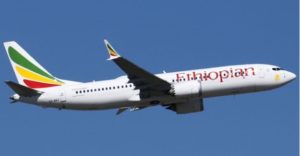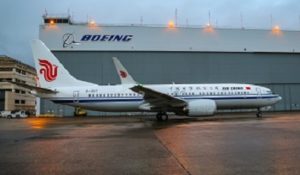Air travel demand continues to improve : IATA

Geneva – The International Air Transport Association (IATA) announced global passenger traffic results for September 2013 showing a continuation of the strong demand trend despite a slight slowdown from August. Total revenue passenger kilometers (RPKs) rose 5.5% compared to September 2012.
Capacity increased at a slightly lower pace at 5.3% over the same period. The load factor in September (80.3%) was largely in line with levels achieved in September 2012.
“We are seeing a more positive environment for air travel demand, based on rising business confidence, a strong increase in export orders in September, and better performance of key emerging markets like China. The strong growth of recent months, coupled with the continuing improvements in air travel demand in September, suggests that there could be a further acceleration in air travel growth before the end of the year,” said Tony Tyler, IATA’s Director General and CEO.
Asia-Pacific carriers recorded an increase of 8.5% compared to September 2012, the strongest performance among the three biggest regions. Downward pressure on growth during recent past months appears to have eased. Improvement in China’s third quarter GDP growth and Japan’s economy are supporting international air travel on airlines in the region. Capacity growth of 7.1% pushed load factor up 1.0 percentage point to 78.1%.
European carriers’ international traffic climbed 3.4% in September compared to the year-ago period. Capacity rose 3.1%, pushing load factor up 0.3 percentage points to 83.9%. Modest economic improvements continue to support growth. Improvements in manufacturing and export activities, and the acceleration in trade growth should help support international air travel demand on European carriers for the remainder of the year.
North American airlines saw demand rise 2.3% over a year ago, a slowdown on the August growth of 5.1%. Capacity growth (3.1%) outpaced demand, pushing down load factor 0.6 percentage points to 83.9%. Consumer confidence and business activity has been improving throughout the third quarter. However, there could be some temporary downward pressure in the coming months due to the 17-day US government shutdown.
Middle East carriers continued to show the strongest year-over-year traffic growth at 10.4%. The trend is likely to continue, with economies such as Saudi Arabia and the United Arab Emirates showing continued strong growth in non-oil producing sectors and robust increases in new export orders. Capacity expanded by 13%, pushing down load factor 1.9 percentage points to 77.2%.
Latin American airlines posted a demand growth of 8.3% in September. While Brazil continues to suffer from rising inflation and weakening consumer demand, other economies, such as Colombia, Peru and Chile, are expanding strongly. Capacity grew 6.1% while load factor rose 1.7 percentage points to 80.9%.
African airlines’ traffic grew 6.9% compared to September 2012, while capacity rose 7.4%, pushing down load factor 0.3 percentage points to 73.2%. The strong economic growth in several emerging economies, including Ghana and Nigeria, as well as increased trade activity, is supporting the demand growth.
Domestic Passenger Markets
Demand for domestic travel climbed 5.1% in September compared to a year ago, with all markets showing year-over-year increase. Total domestic capacity was up 4.7% and load factor rose 0.3 percentage points to 79.1%.
Likewise , IATA released figures showing cargo growth stabilizing in September following recent months of slow but steady growth. Freight Tonne Kilometers (FTK) grew by 0.5% year-on-year. While this is slower that the 3.4% growth recorded for August, overall air cargo volumes are at a 25-month high, and steady increases in the size of the market since April have been supported by improvements in business conditions. The slow-but-steady global growth picture is colored by significant regional variation. Asia-Pacific airlines experienced a 3.1% fall in cargo activity compared to last September whereas carriers in the Middle East reported 9.9% growth.














